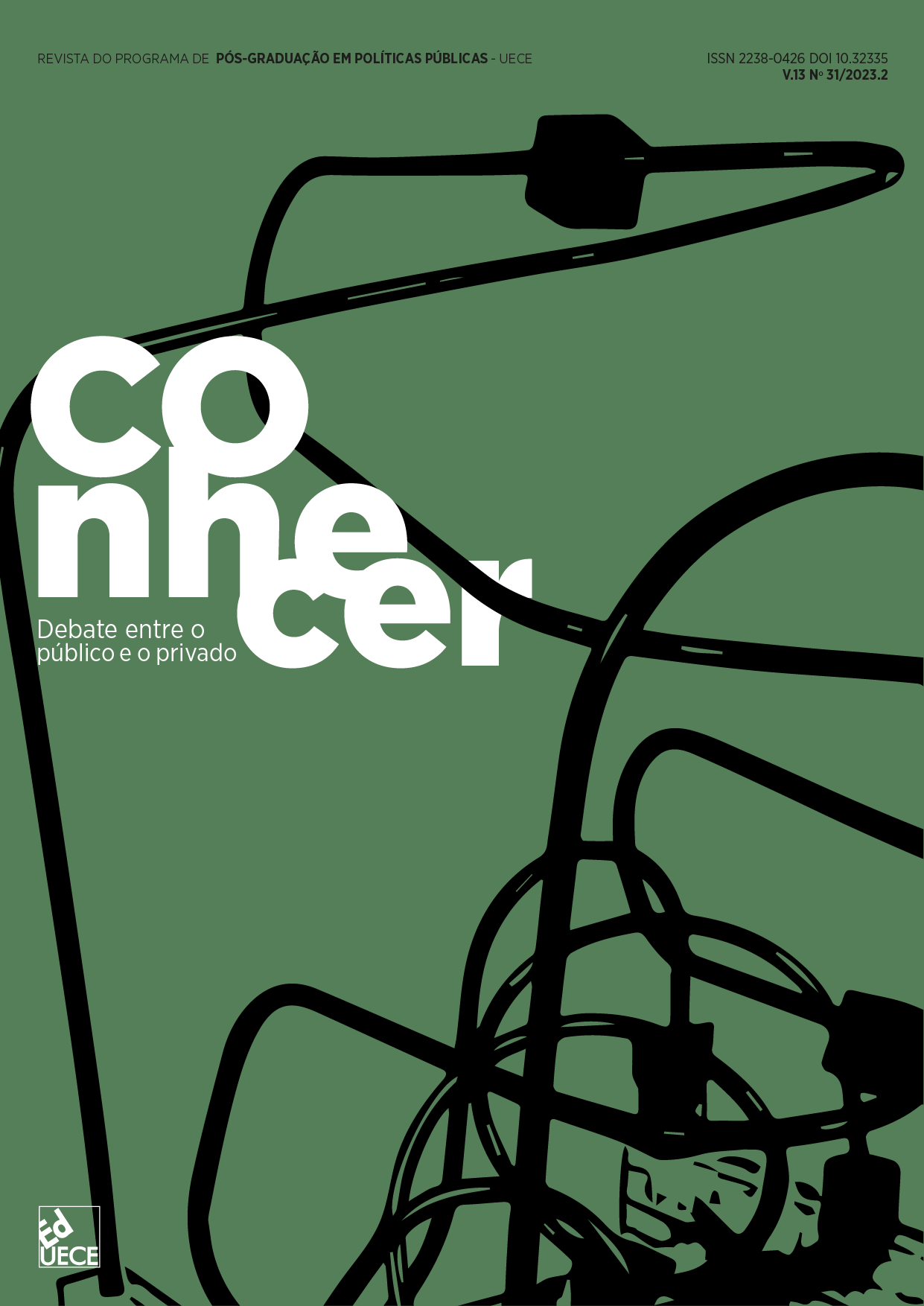Influence of social disorganization on crime and the role of community policing
DOI:
https://doi.org/10.32335/2238-0426.2023.13.31.12212Keywords:
crime and violence, public security, community policing, predictive policing, proximity policingAbstract
This research aimed to verify the influence of social disorganization on crime and violence and the role of community policing in public security. This is a case study carried out in 15 neighborhoods in Fortaleza, Ceará, Brazil, with data on Ceará’s experiences of fighting crime through community policing. Environmental degradation factors (dumping grounds, potholed streets, absent or poor public lighting, and vacant urban land) have a heterogeneous influence on the
rates of crime against property or against life. It has been concluded that the philosophy of community policing, combined with the concepts of proximity policing and predictive policing, materialized through strategies for modernizing the police apparatus (technologies) and better access to them by society, are ways of exercising a police power closer to society. It has been suggested to create an application to be used by street military police for immediate reporting to the competent bodies and crime prevention.
Downloads
References
Adorno, T. (1998). Prismas: crítica cultural e sociedade. Ática.
Arruda, A. J. P., Resende, A. P. B. A., & Fernandes, F. A. (2022). Sistemas de policiamento preditivo e afetação de direitos humanos à luz da criminologia crítica. Direito Público, 18(100), 664-689.
Beato, C. (2012). Crimes e cidades. Ed. UFMG.
Constituição da República Federativa do Brasil de 1988. (1988, 5 de outubro). https://www.planalto. gov.br/ccivil_03/constituicao/constituicao.htm.
Decreto Estadual n. 31.787, de 21 de setembro de 2015. (2015). Institui o pacto “por um Ceará pacífico”. Fortaleza, CE. http://imagens.seplag.ce.gov.br/PDF/20150923/do20150923p01.pdf.
Durkheim, É. (1999). Da divisão do trabalho social. Martins Fontes.
Fórum Brasileiro de Segurança Pública. (2017). Ceará pacífico em ação: matriz de acompanhamento 2017. FBSP. https://forumseguranca.org.br/publicacoes_posts/ceara-pacifico/.
Fórum Brasileiro de Segurança Pública. (2022). Anuário brasileiro de segurança pública: 2022 (Ano 16). FBSP. https://forumseguranca.org.br/wp-content/uploads/2022/06/anuario-2022.pdf?v=15.
Gil, A. C. (2008). Como elaborar projeto de pesquisa (4a ed.). Atlas.
Habermas, J. (1997). Direito e democracia: entre facticidade e validade (Vol. 1). Tempo Brasileiro.
Madeira, L. M. (2003). O retorno da cidade como objeto de estudo da sociologia do crime. Sociologias, 5(9), 370-377.
Misse, M. (2011). Crime e pobreza: velhos enfoques, novos problemas. In M. A. Gonçalves, & G. Villas--Boas (Orgs.), O Brasil na virada do século (pp.2-16). Relume Dumará.
Muniz, J. O., & Mello, K. S. S. (2015). Nem tão perto, nem tão longe: o dilema da construção da autoridade policial nas UPPs. Civitas, 15(1), 44-65.
Odon, T. I. (2016, 29 de março). Tolerância zero e janelas quebradas: sobre os riscos de se importar teorias e políticas (Texto para Discussão n. 194). Senado Federal. https://www12.senado.leg.br/publicacoes/estudos-legislativos/tipos-de-estudos/textos-para-discussao/TD194.
Paiva, L. F. S. (2019). Aqui não tem gangue, tem facção: as transformações sociais do crime em Fortaleza, Brasil. Caderno CRH, 32(85), 165-184.
Paiva, L. S., & Freitas, G. J. (2015). Ecos da violência nas margens de uma sociedade democrática:o caso da periferia de Fortaleza. Sociedade e Cultura, 18(2), 115-128.
Passos, C. N. S. (2021). Uma avaliação sobre a política pública de segurança “proteger”: impactos e resultados na redução de “CVLI” nas comunidades “Gereba”, “Babilônia” e “Barroso 2” (Dissertação de Mestrado). Universidade Estadual do Ceará, Fortaleza, CE.
Peron, A. E. R. (2016). Segurança preditiva? A incorporação de técnicas de mineração de dados e perfilização em conflitos internacionais com drones pelos EUA e em práticas de vigilância pela Policia Militar do Estado de São Paulo In Simpósio Internacional LAVITS. Buenos Aires, Argentina. https://lavits.org/wp-content/uploads/2017/08/P4_Peron.pdf.
Perry, W., McInnis, B., Price, C. C., Smith, S., & Hollywood, J. S. (2013). Predictive policing: the role of crime forecasting in law enforcement operations. RAND.
RAND Corporation. (s. d.). Predictive policing. https://www.rand.org/search.html?query=Predictive+Policing.
Silva, L. A. M. (Org.). (2008). Vida sob cerco: violência e rotina nas favelas do Rio de Janeiro. Nova Fronteira.
Telles, P. S. B. (2021). Inteligência artificial e polícia preditiva: limites e possibilidades. Boletim Científico ESMPU, 57, 247-263.
Trojanowicz, R., & Bucqueroux, B. (1994). Policiamento comunitário: como começar. Polícia Militar do Estado do Rio de Janeiro.
United Nations Development Programme. (2021). UNDP Annual Report 2021. https://www.undp.org/publications/undp-annual-report-2021.
Wilson, J. Q., & Kelling, G. L. (1982). Broken windows: the police and neighborhood safety. Atlantic Monthly, 211, 29-38.
Downloads
Published
How to Cite
Issue
Section
License
Copyright (c) 2023 Conhecer: debate entre o público e o privado

This work is licensed under a Creative Commons Attribution 4.0 International License.
Authors who publish in this journal agree with the following terms:
- Authors retain the copyright and grant the journal the right of first publication, and the study is simultaneously licensed under the Creative Commons Attribution License, which allows sharing the study by acknowledging authorship and initial publication in this journal.



